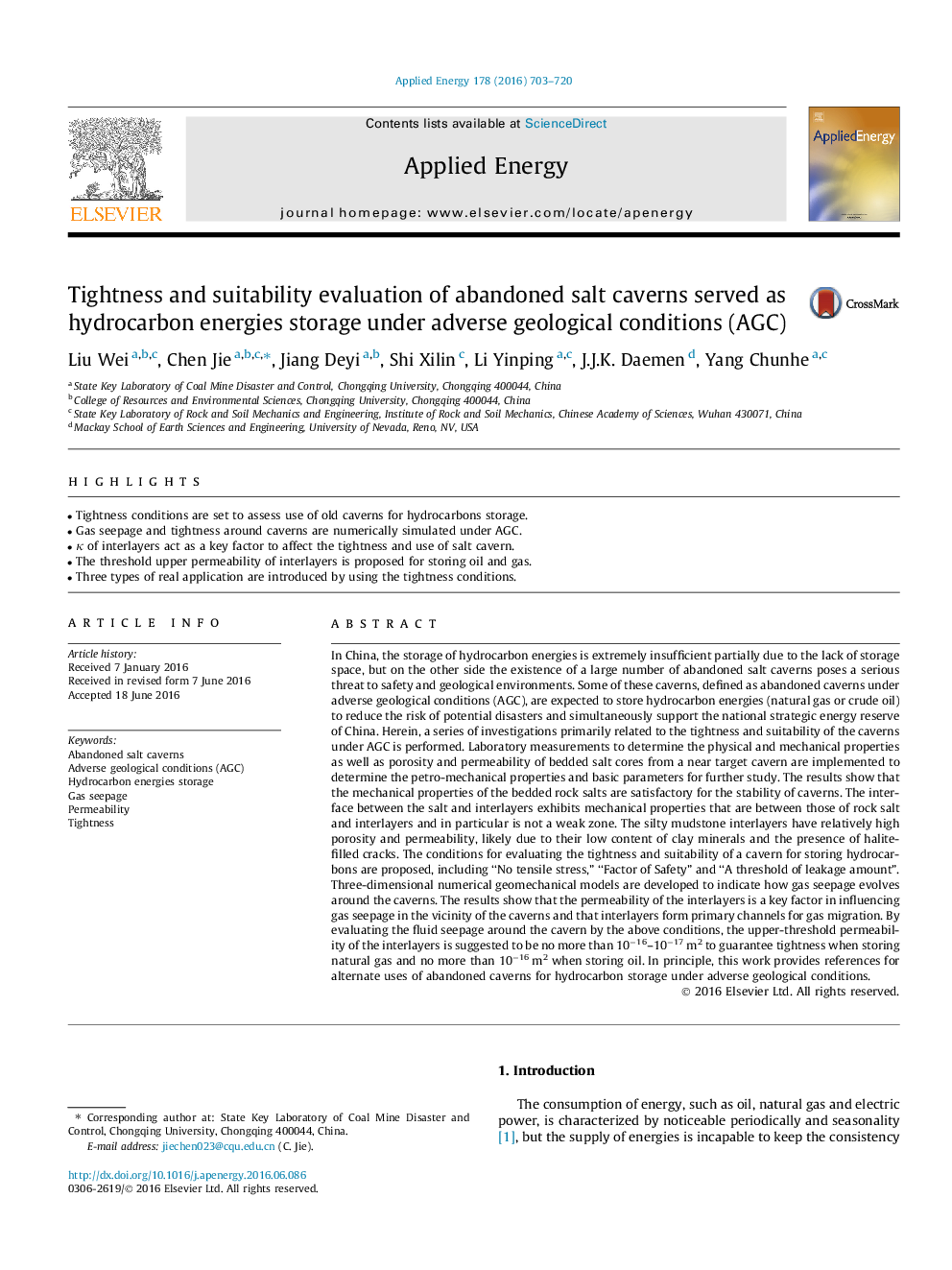| کد مقاله | کد نشریه | سال انتشار | مقاله انگلیسی | نسخه تمام متن |
|---|---|---|---|---|
| 6682580 | 501848 | 2016 | 18 صفحه PDF | دانلود رایگان |
عنوان انگلیسی مقاله ISI
Tightness and suitability evaluation of abandoned salt caverns served as hydrocarbon energies storage under adverse geological conditions (AGC)
دانلود مقاله + سفارش ترجمه
دانلود مقاله ISI انگلیسی
رایگان برای ایرانیان
موضوعات مرتبط
مهندسی و علوم پایه
مهندسی انرژی
مهندسی انرژی و فناوری های برق
پیش نمایش صفحه اول مقاله

چکیده انگلیسی
In China, the storage of hydrocarbon energies is extremely insufficient partially due to the lack of storage space, but on the other side the existence of a large number of abandoned salt caverns poses a serious threat to safety and geological environments. Some of these caverns, defined as abandoned caverns under adverse geological conditions (AGC), are expected to store hydrocarbon energies (natural gas or crude oil) to reduce the risk of potential disasters and simultaneously support the national strategic energy reserve of China. Herein, a series of investigations primarily related to the tightness and suitability of the caverns under AGC is performed. Laboratory measurements to determine the physical and mechanical properties as well as porosity and permeability of bedded salt cores from a near target cavern are implemented to determine the petro-mechanical properties and basic parameters for further study. The results show that the mechanical properties of the bedded rock salts are satisfactory for the stability of caverns. The interface between the salt and interlayers exhibits mechanical properties that are between those of rock salt and interlayers and in particular is not a weak zone. The silty mudstone interlayers have relatively high porosity and permeability, likely due to their low content of clay minerals and the presence of halite-filled cracks. The conditions for evaluating the tightness and suitability of a cavern for storing hydrocarbons are proposed, including “No tensile stress,” “Factor of Safety” and “A threshold of leakage amount”. Three-dimensional numerical geomechanical models are developed to indicate how gas seepage evolves around the caverns. The results show that the permeability of the interlayers is a key factor in influencing gas seepage in the vicinity of the caverns and that interlayers form primary channels for gas migration. By evaluating the fluid seepage around the cavern by the above conditions, the upper-threshold permeability of the interlayers is suggested to be no more than 10â16-10â17Â m2 to guarantee tightness when storing natural gas and no more than 10â16Â m2 when storing oil. In principle, this work provides references for alternate uses of abandoned caverns for hydrocarbon storage under adverse geological conditions.
ناشر
Database: Elsevier - ScienceDirect (ساینس دایرکت)
Journal: Applied Energy - Volume 178, 15 September 2016, Pages 703-720
Journal: Applied Energy - Volume 178, 15 September 2016, Pages 703-720
نویسندگان
Liu Wei, Chen Jie, Jiang Deyi, Shi Xilin, Li Yinping, J.J.K. Daemen, Yang Chunhe,